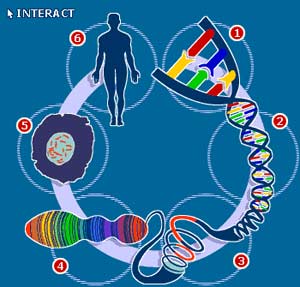This generation follows the next, and anthropologists are always seeking to discover what has shaped us as humans.
Renowned paleoanthropologist Louis Leakey believed that it was the tools we used that made us human. In the 1960s, when he discovered a human-like skull surrounded by stone tools in Tanzania, he named it Homo habilis,
 |
| Homo habilis using stone tools (Image: devargaselementary) |
an assumed species believed to be the first tool-making hominid. However, when Jane Goodall, a primatologist, demonstrated that chimpanzees could also use a variety of tools, researchers have debated whether Homo habilis truly belongs to the Homo genus.
Subsequent studies have focused on the unique traits defined as distinctly human, such as social herd behavior, cultural individual behavior, language communication, laughter, and a larger brain. Yet, scientists have also observed that some species exhibit similar characteristics; for example, chimpanzees possess a rudimentary culture, parrots can mimic speech, and mice can giggle when tickled. Like other species, we have a unique genome shaped by evolutionary history. Today, for the first time, scientists can delve into the fundamental questions of anthropology at a new level: What genetic changes have made us human?
With the human genome in hand and primate genome data being harvested, we are entering an era where we can identify the genetic changes that have separated us from our relatives. From the genomic information of monkeys, chimpanzees, orangutans, etc., we can also determine which ancient genes are central to the evolutionary tree of primates.
Statistical analysis repeatedly shows that the genetic difference between humans and chimpanzees is surprisingly small, about 1.2%. Keep in mind that a single change in every 100 base pairs can affect thousands of genes, and the differences could be greater if we consider the processes of insertion or deletion of one (or more) bases. Even if we assess all the differing sequences (about 40 million) between humans and chimpanzees, what would they signify? There will be many interesting findings, including several sequences that are merely the result of 6 million years of genetic “drift,” thus having little or no impact on human physiology or behavior, while a minority of sequences may show small changes but have significant effects; these sequences belong to regulatory or non-coding regions.
Half of these differences help determine that the species is a chimpanzee and not a human. But how do we classify all these differences?
One way is to zero in on all the genes that are favored
 |
|
Structure of human DNA (Image: bbc) |
during natural selection in humans. The search for subtle traces in the selection process of human DNA and that of other primates has indicated that there are dozens of such genes, particularly those related to host-parasite interactions, reproduction, and sensory systems like taste, etc.
However, not all of these genes contribute to our differences from our primate relatives. Our genome shows that humans have evolved specific traits related to malaria parasites, but the malaria defense mechanisms did not shape our uniqueness. Some researchers are identifying clinical mutations that directly impact important human traits, thereby tracing the evolution of these genes; in this regard, there is more interest in groups of genes rather than individual genes. For example, MCPH1 and ASPM, when mutated, cause microcephaly, while the gene FOXP2 in an abnormal state can lead to language loss in children. Notably, all three genes have shown to be significant markers of evolutionary pressure in humans, not in chimpanzees. Thus, scientists propose that these genes play a crucial role in the development of human brain size and the formation of verbal communication abilities.
Nevertheless, even if the aforementioned genes do indeed have those functions, it is still challenging to fully understand what they do. Knockout experiments, the classical method used by geneticists to explore gene functions, cannot be applied to humans or primates for ethical reasons. Therefore, the feasible approach is comparative genome and phenotype analysis from a large number of humans and ape-like primates. In fact, some researchers are advocating for a project called “The Great Ape Phenome” to harness the flood of genomic data along with morphological information on ape-like primates. Another group of scientists is taking a different approach, seeking information from the various human variants through mutations discovered in living human populations, hoping to trace subtle biological and behavioral differences. Both research directions face two significant challenges: strong enough statistical analyses and social ethics, but there is hope for resolution.
Ultimately, scientists believe that to comprehensively understand the unique traits that define humanity, it must include both DNA information and other related data. Researchers are also revisiting long-debated traits such as sophisticated technical cultural language, wherein both nature and nurture play primary roles. We are in the genomic era, but we recognize that as humans, we need more than genes to form our identities.
Trần Hoàng Dũng

















































